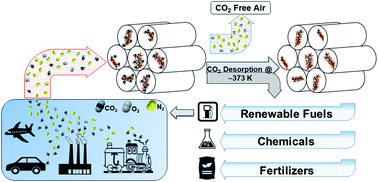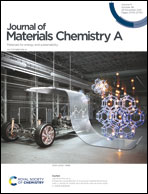An overview of porous silica immobilized amines for direct air CO2 capture
Abstract
An increased level of CO2 in the atmosphere is identified as a threat to life on planet earth. Since hydrogenation of CO2 back to fuel is identified as a major solution for both decreasing the emission and meeting the energy demands, the energy-efficient capture of CO2 is recognized as an inevitably significant step. Small- and large-scale direct air capture (DAC) of CO2 is a viable solution to address CO2 discharge from industrial, automobile, and household activities (both point and mobile sources). The real challenge of DAC is to pick 400 molecules of CO2 for capture from a million gas molecules in the atmosphere. Thus, in this report, we focus on reviewing the literature dealing with the chemical interaction between the sorbate (CO2) and sorbent which is highly specific. Materials such as metal hydroxides and amine solutions are well discussed in other celebrated reviews and perspectives. Here we focus on inert porous silica immobilized amine materials emphasizing particularly on their advantages compared to other sorbent materials. Furthermore, amine functionalized novel silica materials such as bimodal porous silica and hierarchical silica are discussed highlighting the CO2 capture mechanism, desorption, and sorbent-regeneration. Both O2 and CO2-induced degradation pathways along with measures to retard sorbent degradation are presented. Finally, a brief overview of sustainability and future potential of amine-silica composite materials is presented to gain more insights.

- This article is part of the themed collection: Journal of Materials Chemistry A Recent Review Articles


 Please wait while we load your content...
Please wait while we load your content...